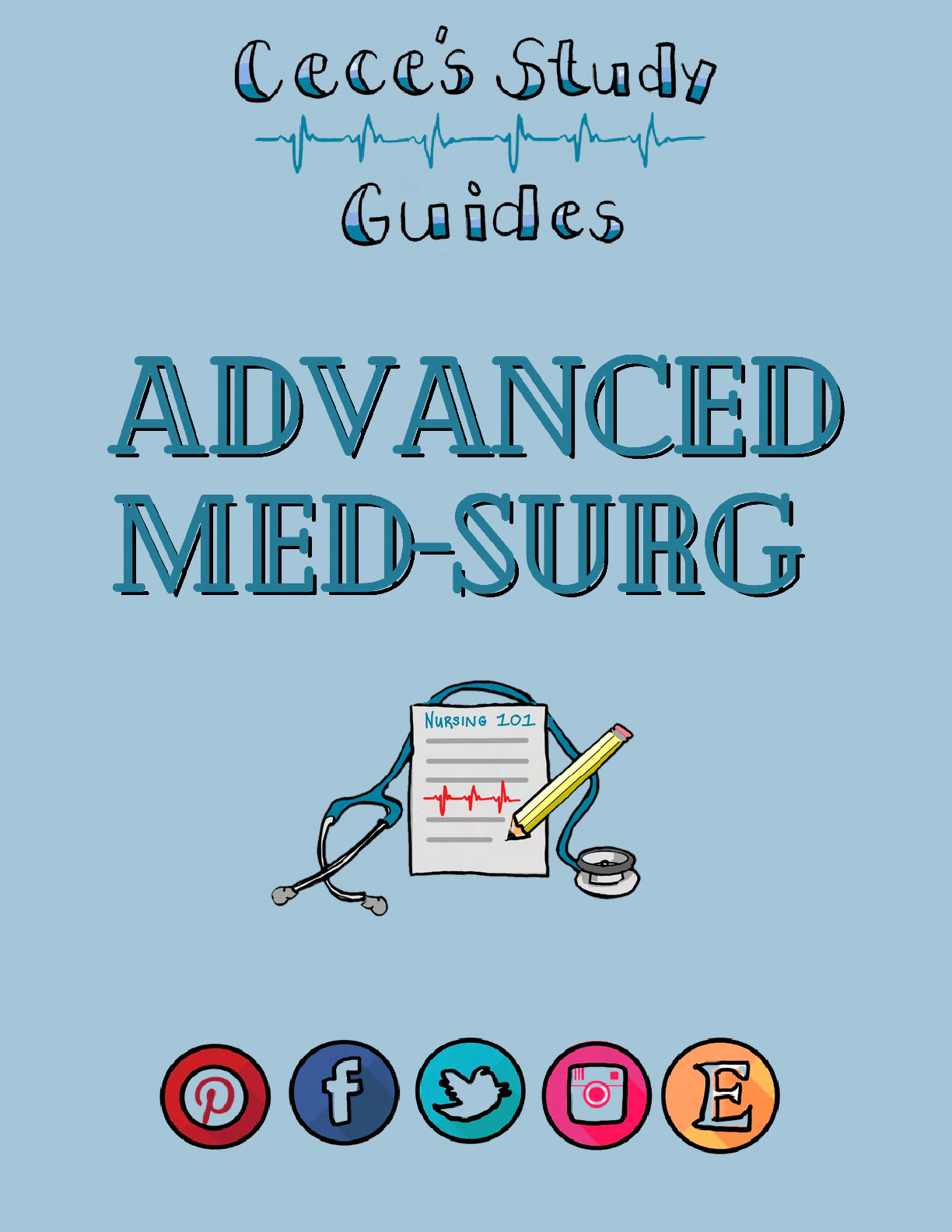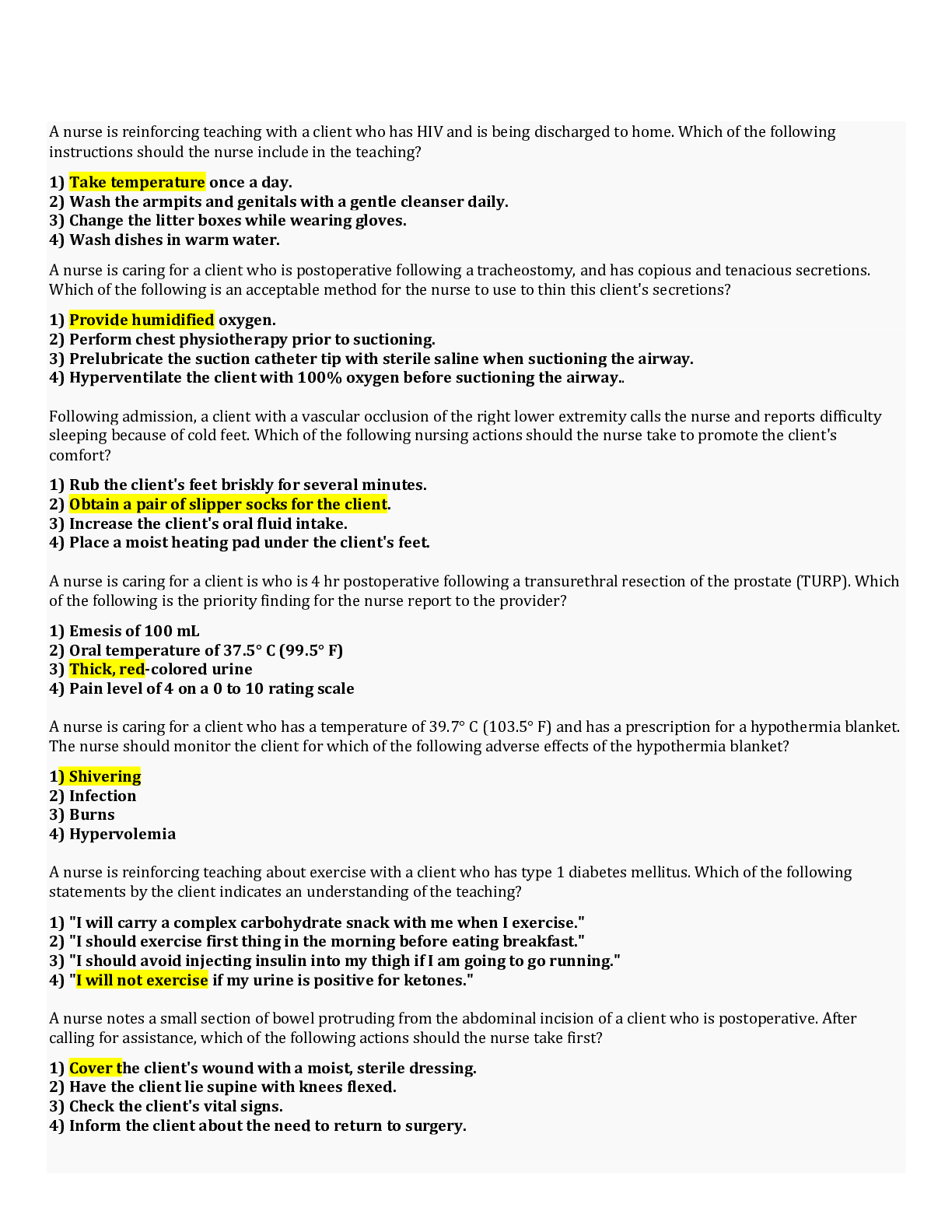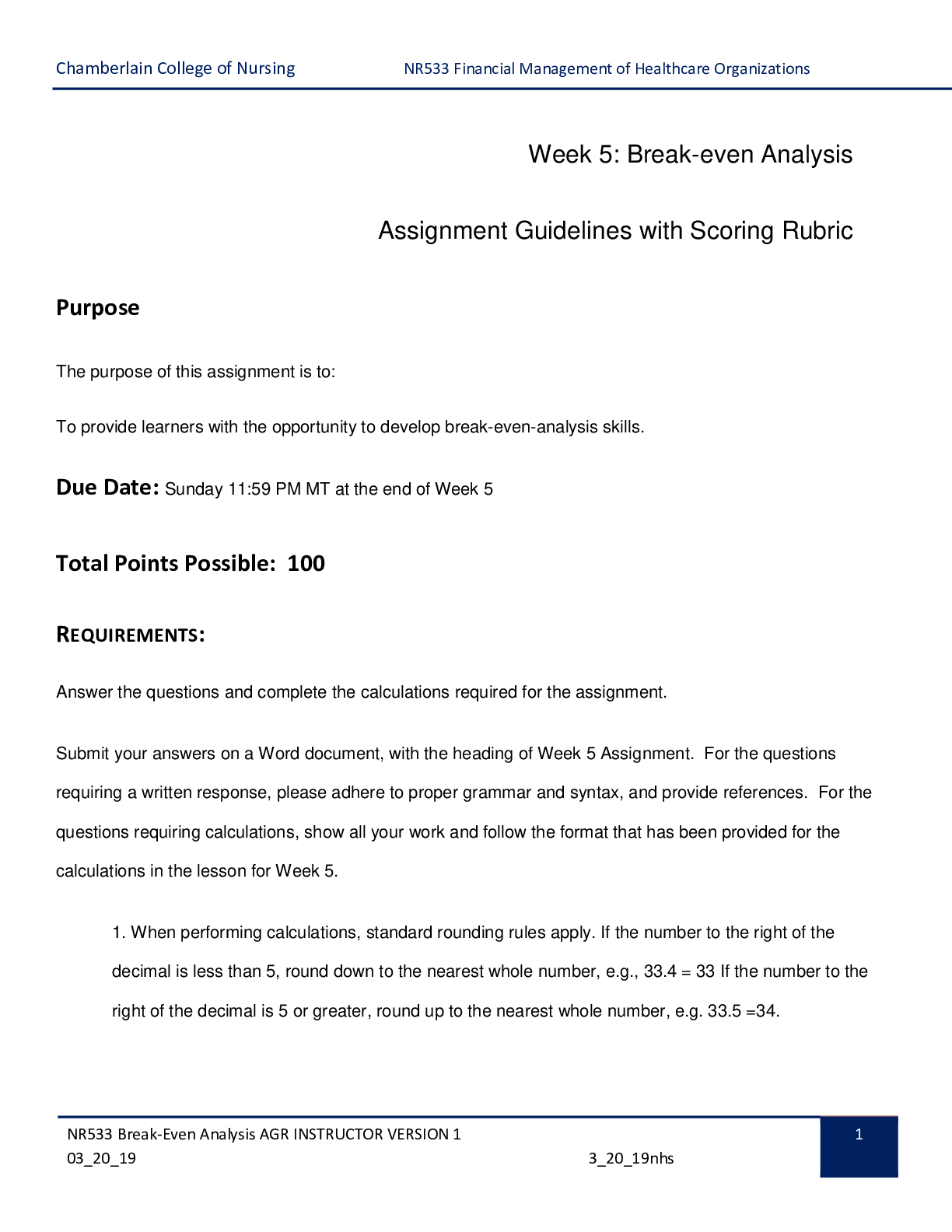*NURSING > STUDY GUIDE > NR_507_Final_Possible_Questions(download to get an A) (All)
NR_507_Final_Possible_Questions(download to get an A)
Document Content and Description Below
1. Acid base imbalance While checking arterial blood gas results, a nurse finds respiratory acidosis. What does the nurse suspect is occurring in the patient? reduced tidal volumes A 20-ye... ar-old male is in acute pain. An arterial blood gas reveals decreased carbon dioxide (CO2) levels. Which of the following does the nurse suspect is the most likely cause? Hyperventilation The nurse is assessing a client with suspected respiratory acidosis. Which assessment items are priority for the nurse to collect? Rate and depth of respirations, Skin color and temperature, Appearance of the optic nerve o The nurse is administering sodium bicarbonate to the client with respiratory acidosis. The nurse understands that which is the primary goal of treatment for this client? Removing excess acids in blood The student nurse is assisting in the care for a client with acute respiratory acidosis. The nurse explains to the student nurse that the client's blood pH initially falls in the development of acute respiratory acidosis because of which process? Hypoventilation 2. ACTH The nurse is preparing a client for testing to determine if the client has Cushing syndrome. What tests are included in the screening process 24-hour urine secretion of cortisol Dexamethasone suppression test Plasma levels of ACTH A client comes to the clinic with fatigue and muscle weakness. The client also states she has been having diarrhea. The nurse observes the skin of the client has a bronze tone and when asked, the client says she has not had any sun exposure. The mucous membranes of the gums are bluish-black. When reviewing laboratory results from this client, what does the nurse anticipate seeing? Increased levels of ACTH A client is diagnosed with adrenocorticotropic hormone deficiency (ACTH) and is to begin replacement therapy. Regarding which type of replacement will the nurse educate the client? Cortisol replacement therapy Following destruction of the pituitary gland, ACTH stimulation stops. Without ACTH to stimulate the adrenal glands, the adrenals' production of cortisol drops. This is an example of which type of endocrine disorder? Secondary The nurse is preparing a client for a test that will measure negative feedback suppression of ACTH. Which medication will the nurse administer in conjunction for this test? Dexamethasone ACTH deficiency results in secondary hypercortisolism ACTH deficiency is most commonly caused by? glucocorticoid withdrawal 6 symptoms of an ACTH deficiency tiredness weakness anorexia N/V hypoglycemia orthostatic hypotension interpretation of ACTH levels requires simultaneous assessment of plasma cortisol levels ACTH levels are normal to high in primary adrenal insufficiency ACTH levels are low to absent in secondary adrenal insufficiency The client has been taking an oral cortisol preparation for 2 years to manage an autoimmune disease. What effects does the nurse expect this therapy to have on this client's circulating levels of ACTH and aldosterone? Decreased ACTH, decreased aldosterone A nurse checks lab results as both Cushing syndrome and Addison disease can manifest with elevated levels of: Adrenocorticotropic hormone (ACTH) 3. Acute epiglottitis A caregiver calls the pediatrician's office and reports to the nurse that her 4-year-old, who was fine the previous day, complained of a sore throat early in the morning and now has a temperature of 102.6° F (39.2° C). The caregiver has tried to get the child to nap but the child gets panicky, immediately sits back up, and leans forward with her mouth 1 open and tongue out when the caregiver encourages her to lie down. The nurse suspects the child has which of the following conditions? Epiglottitis The caregivers of a child report that their child had a cold and complained of a sore throat. When interviewed further they report that the child has a high fever, is very anxious, and is breathing by sitting up and leaning forward with the mouth open and the tongue out. The nurse recognizes these symptoms as those seen with which of the following disorders? Epiglottitis The nurse is caring for a 5-year-old girl who shows signs and symptoms of epiglottitis. The nurse recognizes a common complication of the disorder is for the child to: be at risk for respiratory distress. A 5-year-old child is brought to the clinic by his father because the child developed a high fever over the past 2 to 3 hours. The nurse suspects epiglottitis based on which signs and symptoms? • Difficulty speaking • Drooling • Sitting with neck extended • Frightened appearance 4. AIDS A 36-year-old man enters the hospital in an extremely debilitated condition. He has purple-brown skin lesions (a symptom of Kaposi's sarcoma) and a persistent cough. A physical examination reveals swollen lymph nodes, and laboratory tests find a very low lymphocyte count. Information taken during the personal history reveals that he has multiple sex partners with whom he frequently engages in unprotected sex. What is likely to be the man's problem and what is his prognosis? He is probably suffering from AIDS. His outlook is poor once the disease has progressed to this advanced stage. There is no cure, and drug therapy has had limited short-term success. Why does nursing care of a patient with acquired immune deficiency syndrome (AIDS) include monitoring of T lymphocyte counts? A decrease in the number of T cells would make the patient more susceptible to infection and unusual cancers. What is the length of time from infection with the AIDS virus to seroconversion? Up to six months A 21-year-old woman diagnosed with HIV/AIDS 4 years ago now presents with cytomegalovirus. The nurse explains to the woman that the infection is caused by a common organism that normally does not cause infection in someone with a healthy immune system. This type of infection is called what? Opportunistic infection The nurse is caring for a client who has just been diagnosed with AIDS. The client asks the nurse, "How long will I live?" Which of the following is an appropriate response by the nurse? "AIDS is considered to be a chronic illness today." Which of the following clients is at the greatest risk for developing an intracellular pathogen infection? An AIDS client with a decreased CD4+ TH1 count 5. Alveolar ventilation/perfusion A consequence of alveolar hypoxia is: Pulmonary artery vasoconstriction The pressure required to inflate an alveolus is inversely related to: Alveolus radius The nurse is describing the movement of blood into and out of the capillary beds of the lungs to the body organs and tissues. What term should the nurse use to describe this process? Perfusion A pulmonologist is discussing the base of the lungs with staff. Which information should be included? At the base of the lungs: Arterial perfusion pressure exceeds alveolar gas pressure When the pulmonologist discusses the condition in which a series of alveoli in the left lower lo be receive adequate ventilation but do not have adequate perfusion, which statement indicates the nurse understands this condition? When this occurs in a patient it is called: Alveolar dead space Which of the following conditions should the nurse monitor for in a patient with hypoventilation? hypercapnia A nurse is describing the pathophysiology of emphysema. Which information should the nurse include? Emphysema results in: the destruction of alveolar septa and air trapping. 6. Alzheimer’s disease A patient is admitted to the unit in the middle stages of Alzheimer's disease. How would the nurse expect to find the patient's state of mind? [Show More]
Last updated: 1 year ago
Preview 1 out of 27 pages
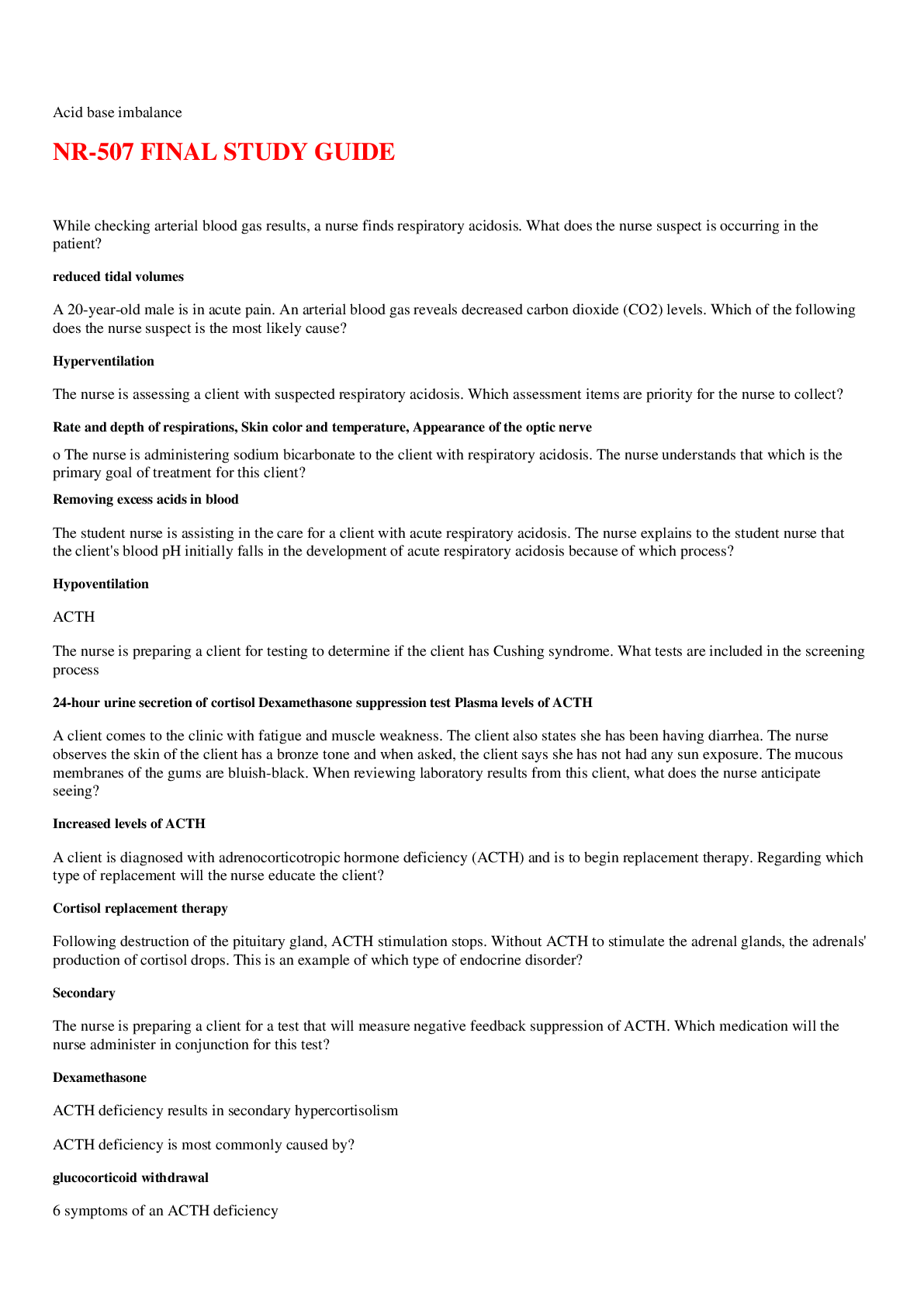
Reviews( 0 )
Document information
Connected school, study & course
About the document
Uploaded On
Jun 01, 2021
Number of pages
27
Written in
Additional information
This document has been written for:
Uploaded
Jun 01, 2021
Downloads
0
Views
37


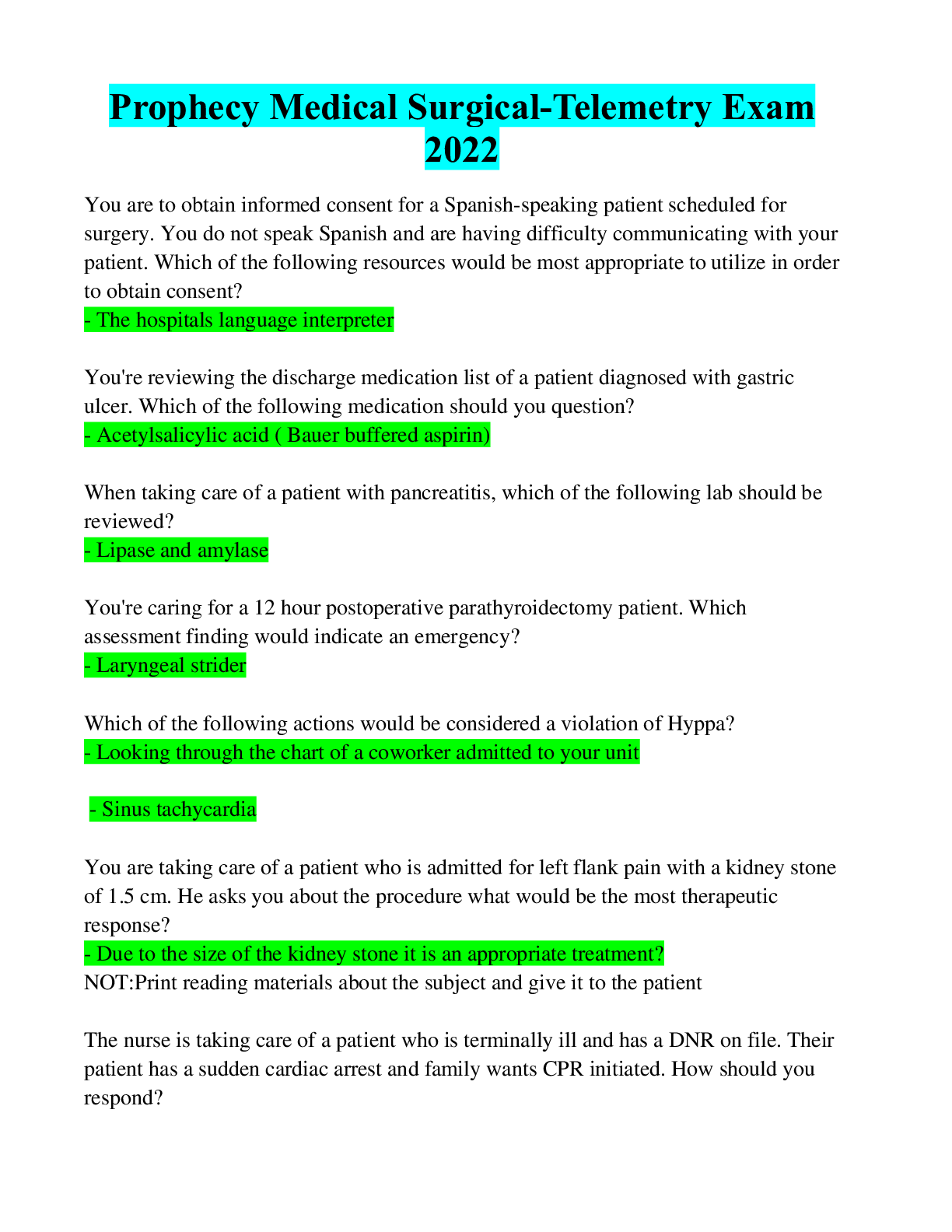
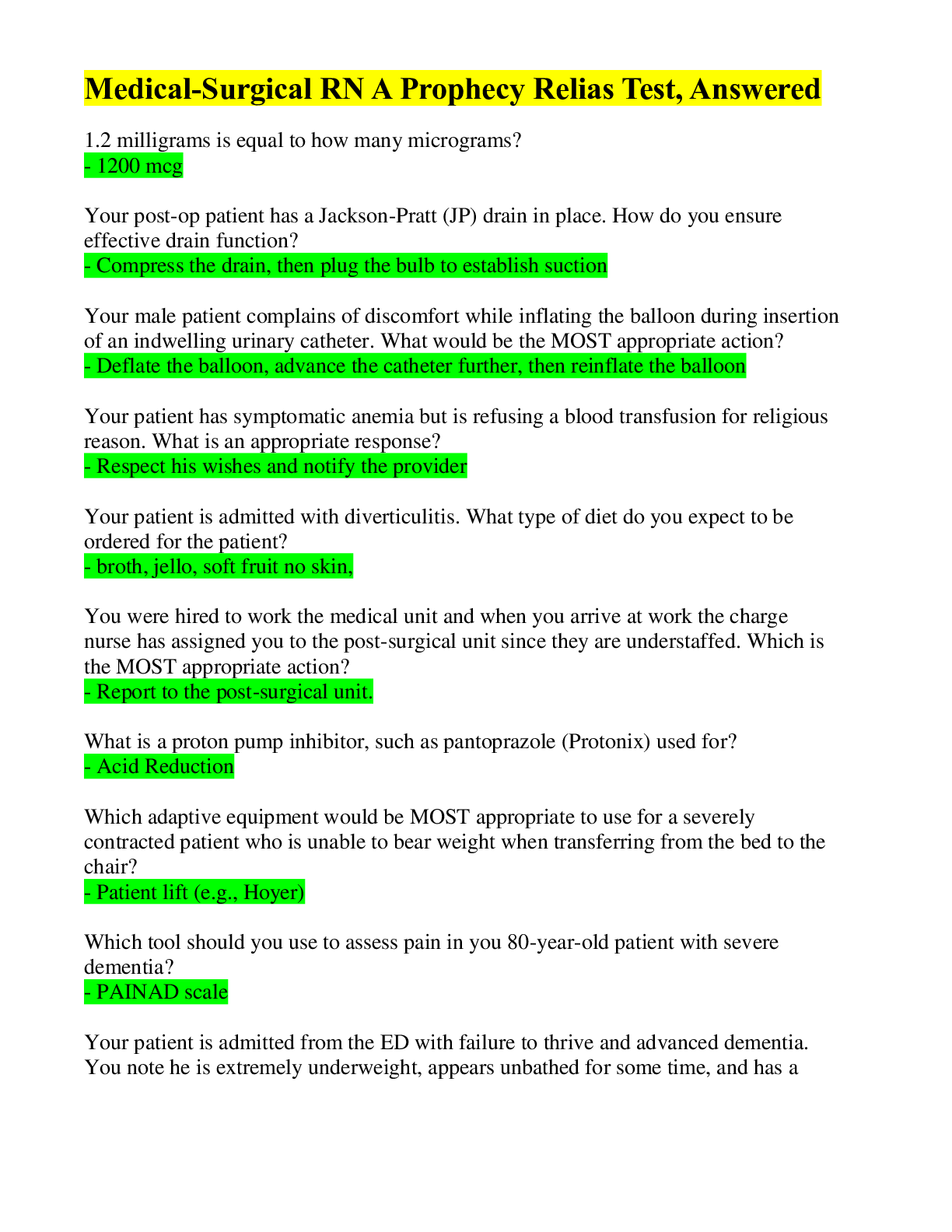
.png)

.png)
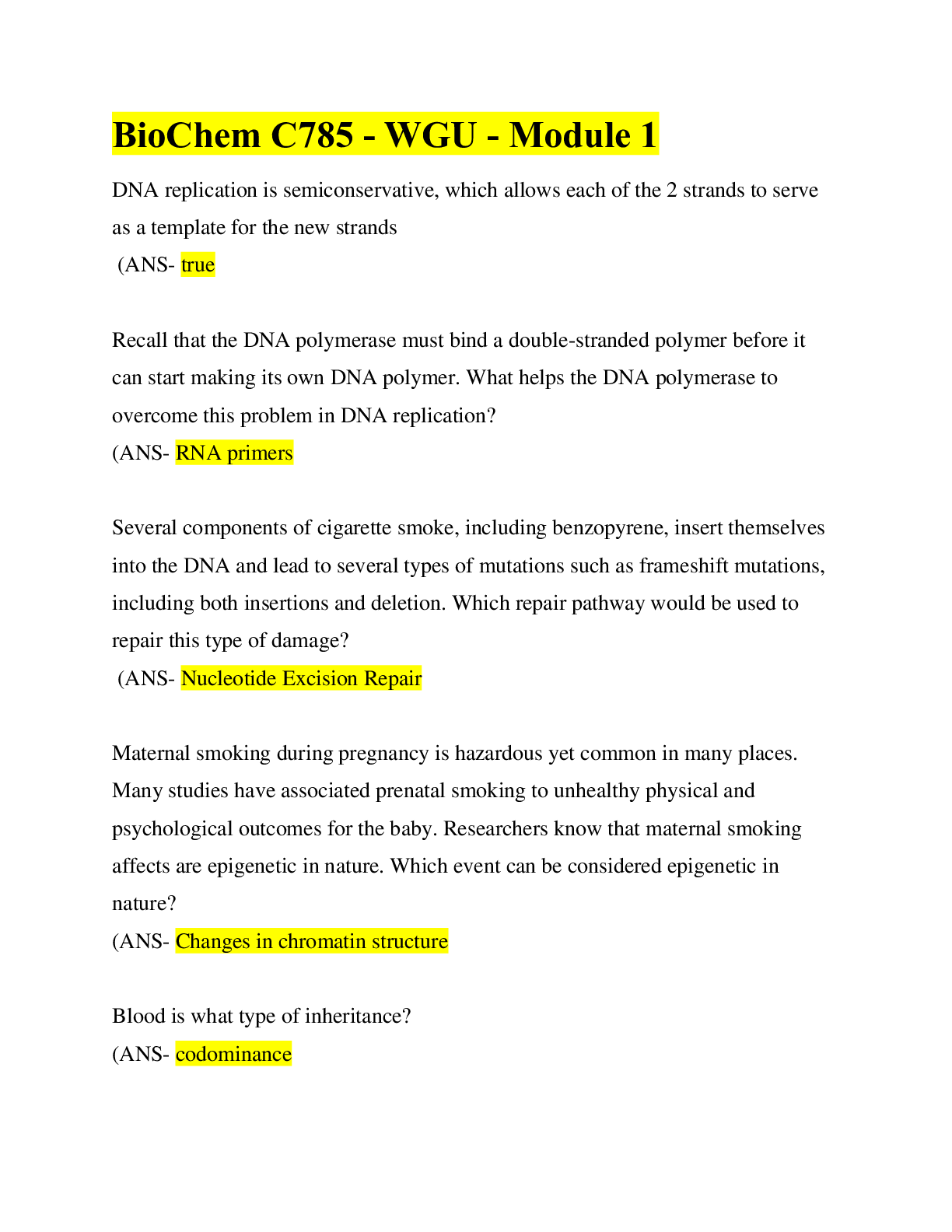

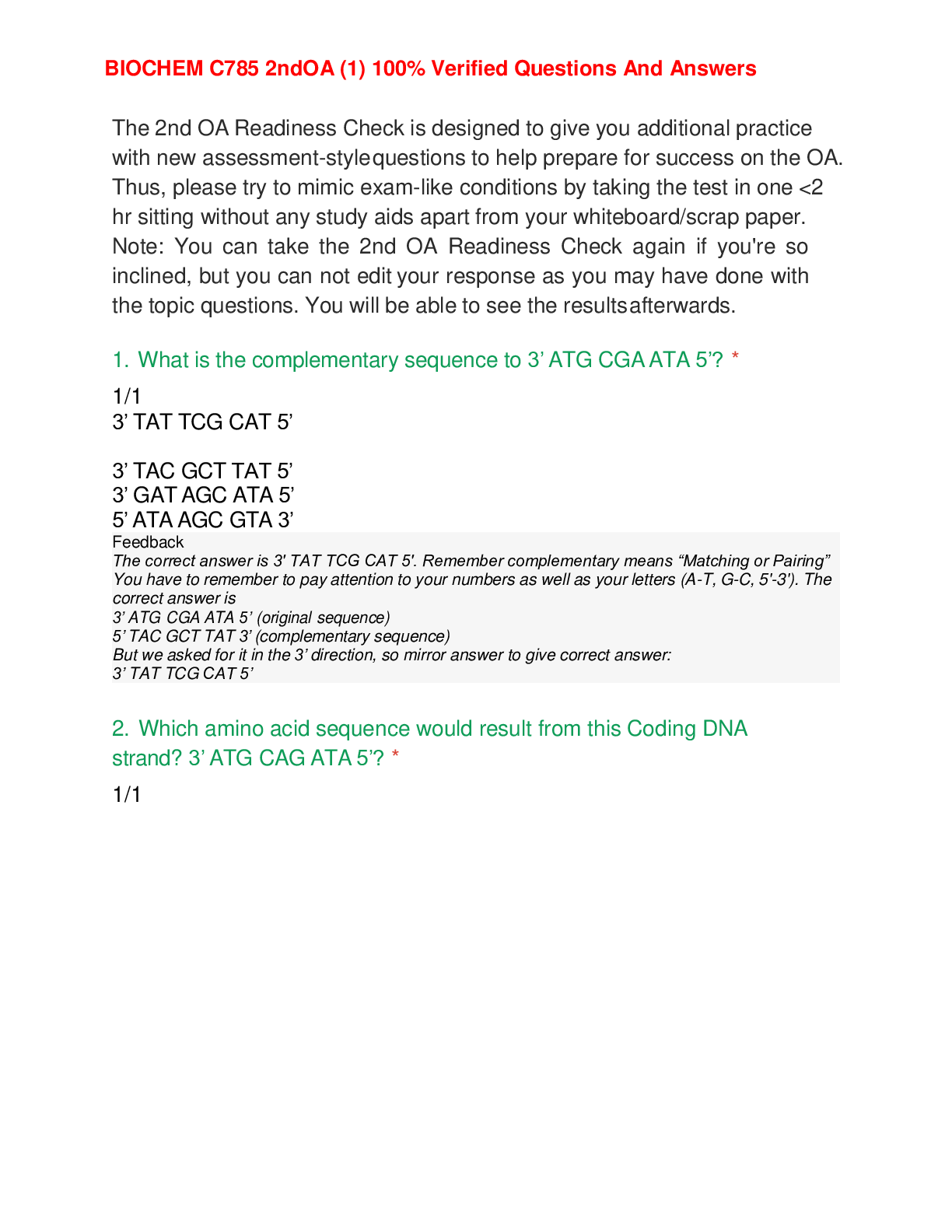

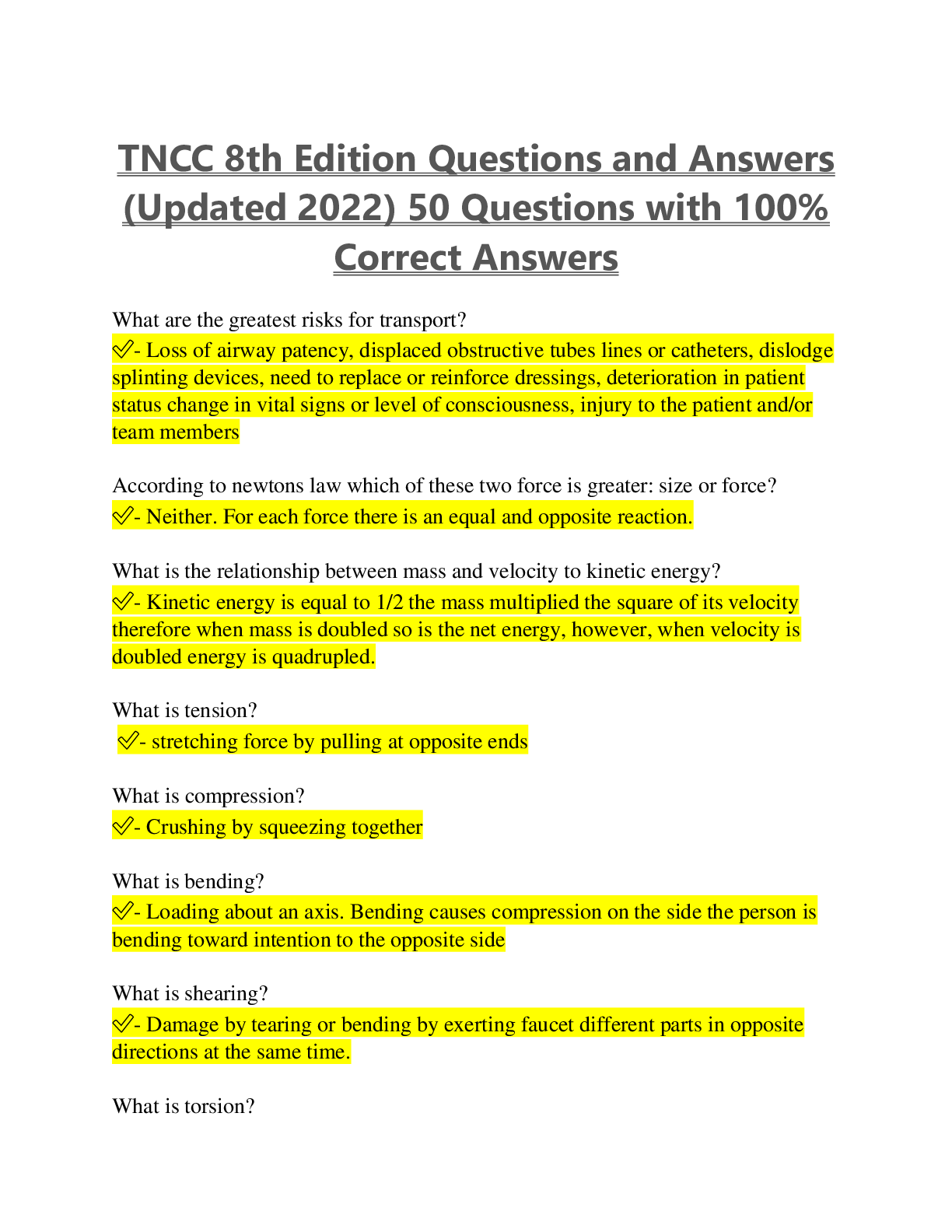
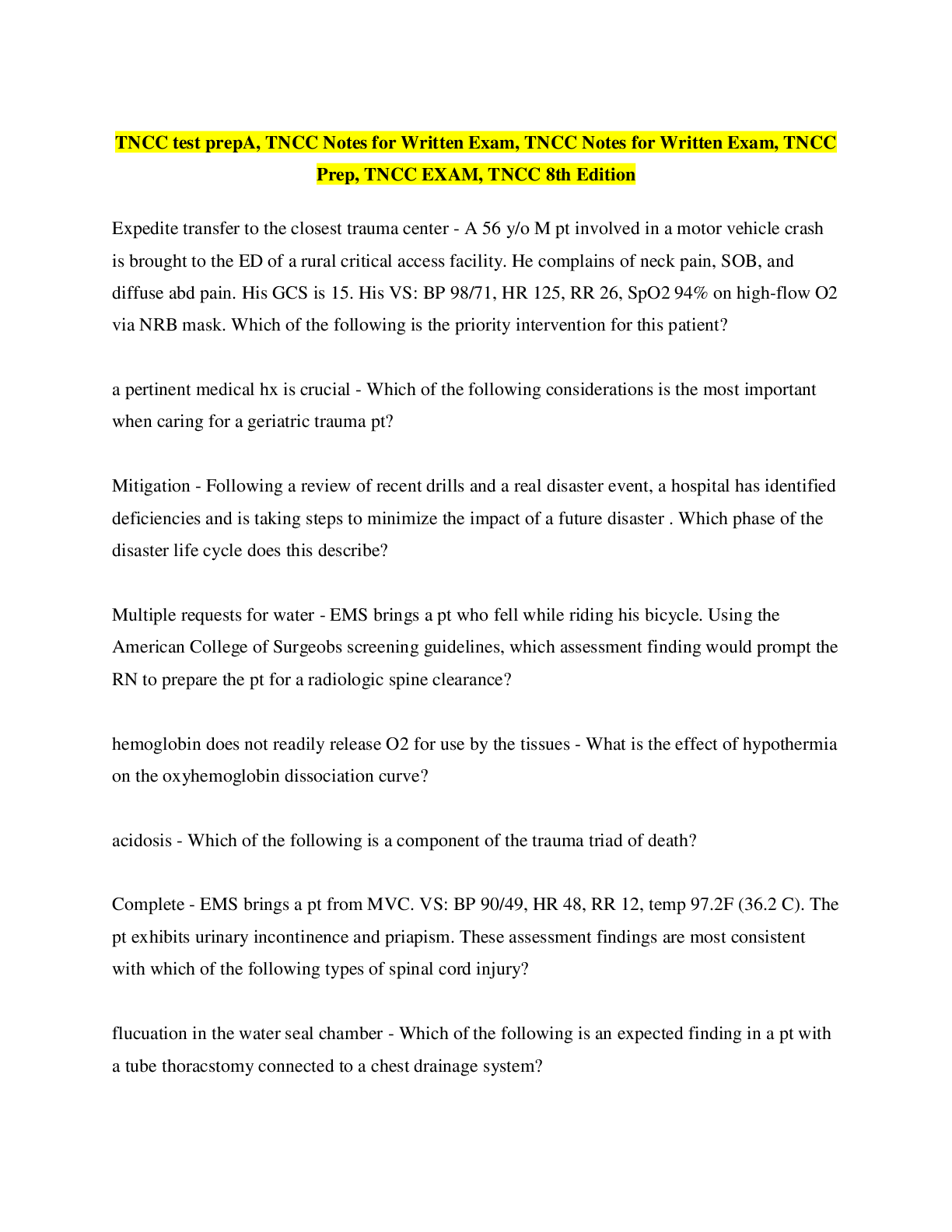
.png)
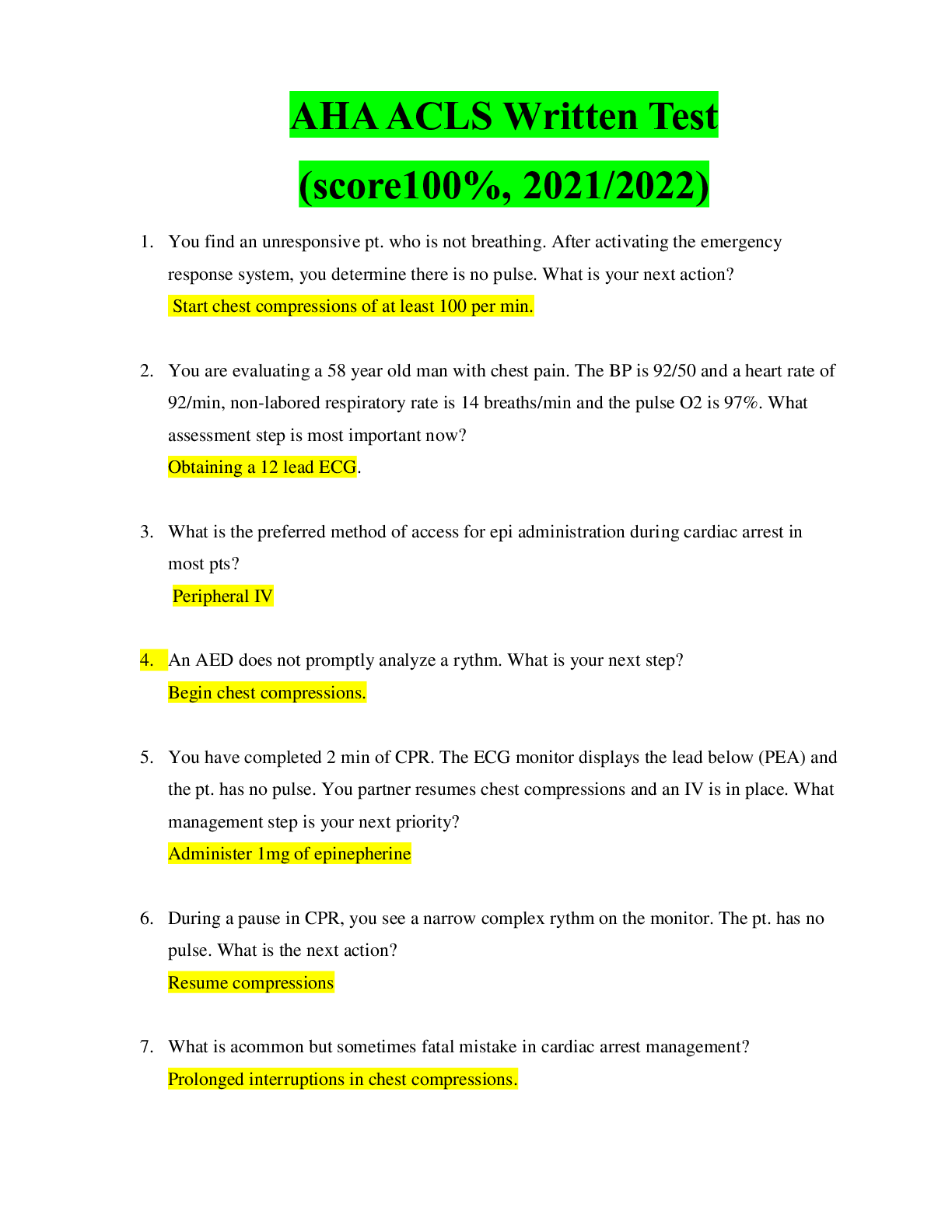

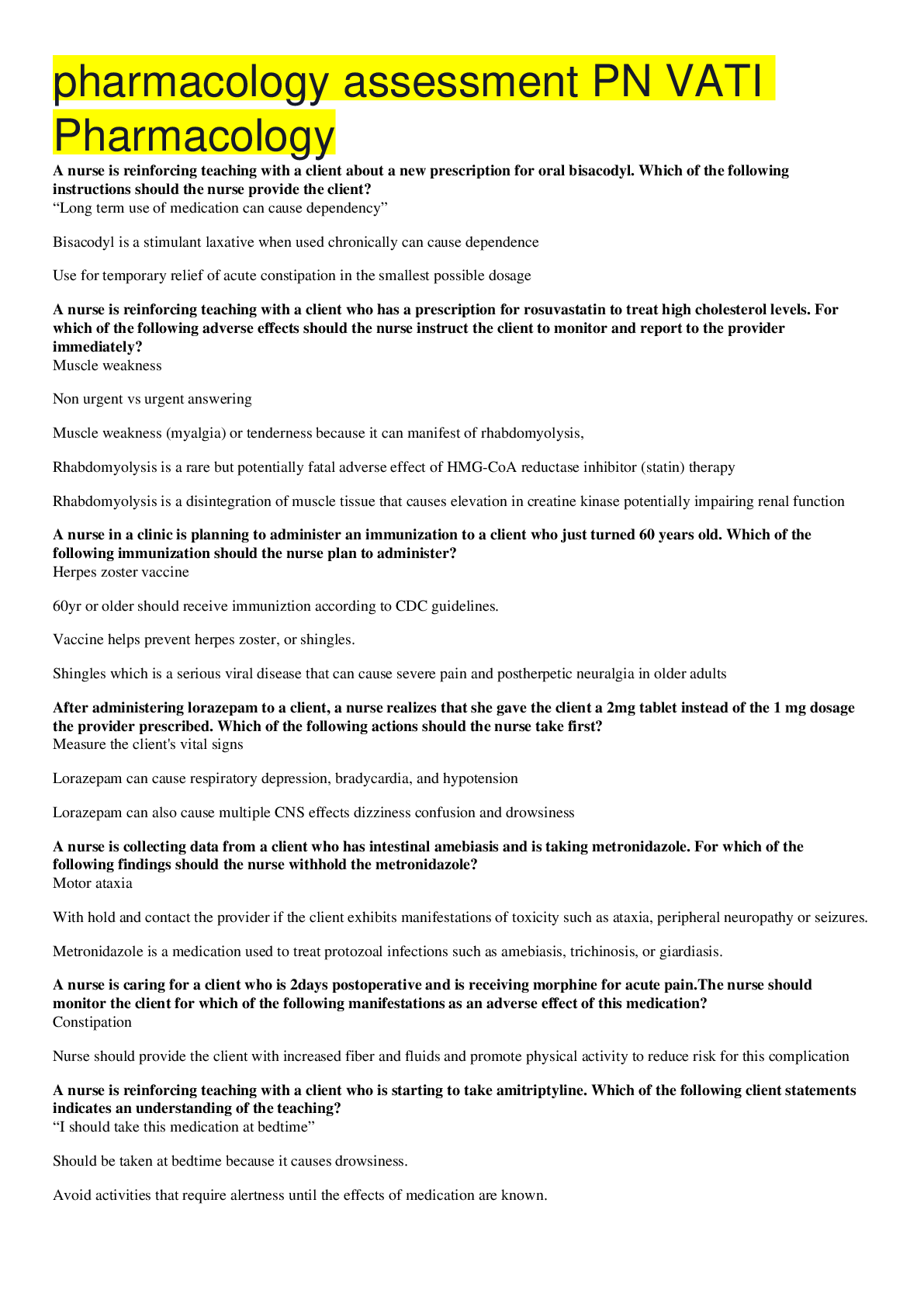






.png)

